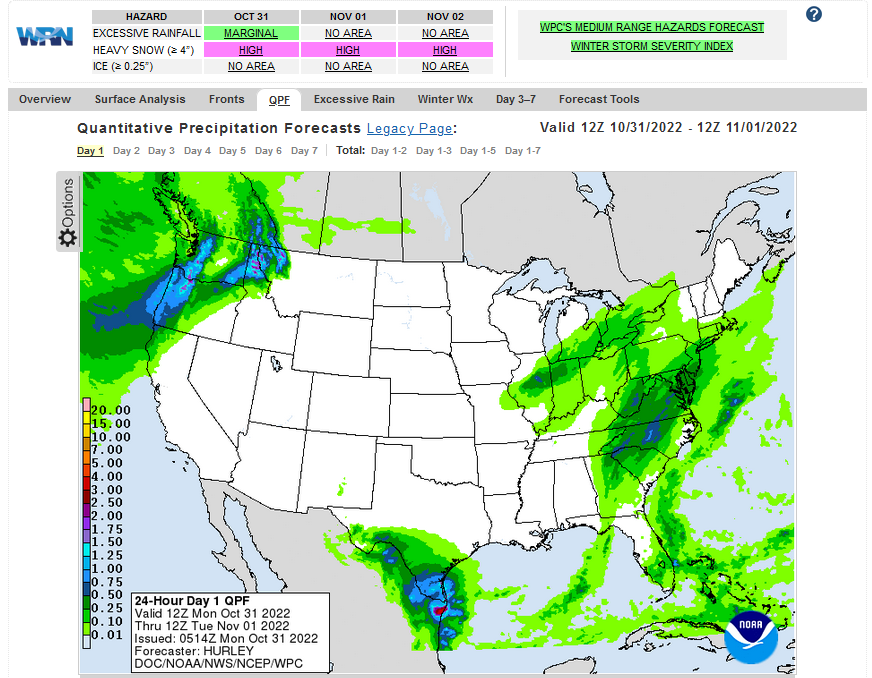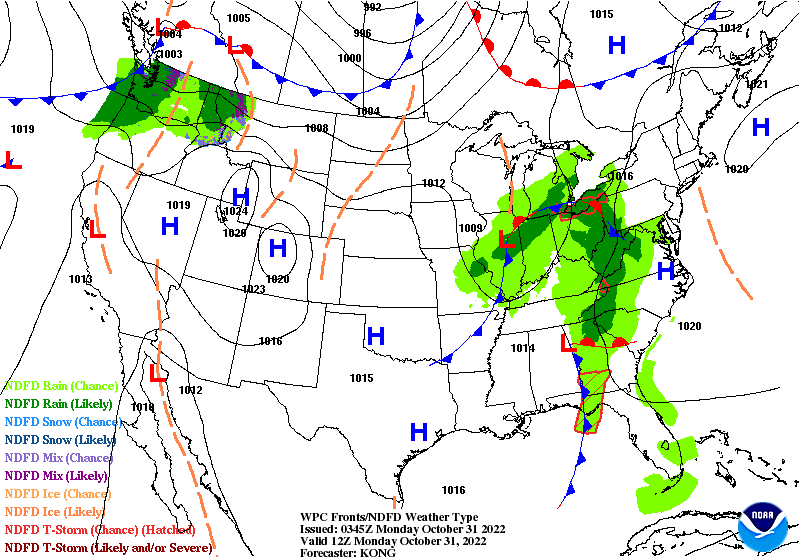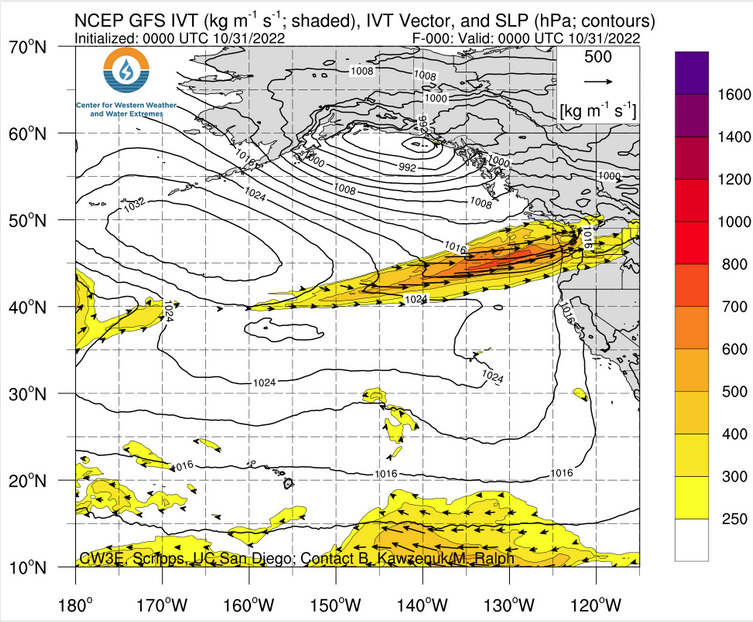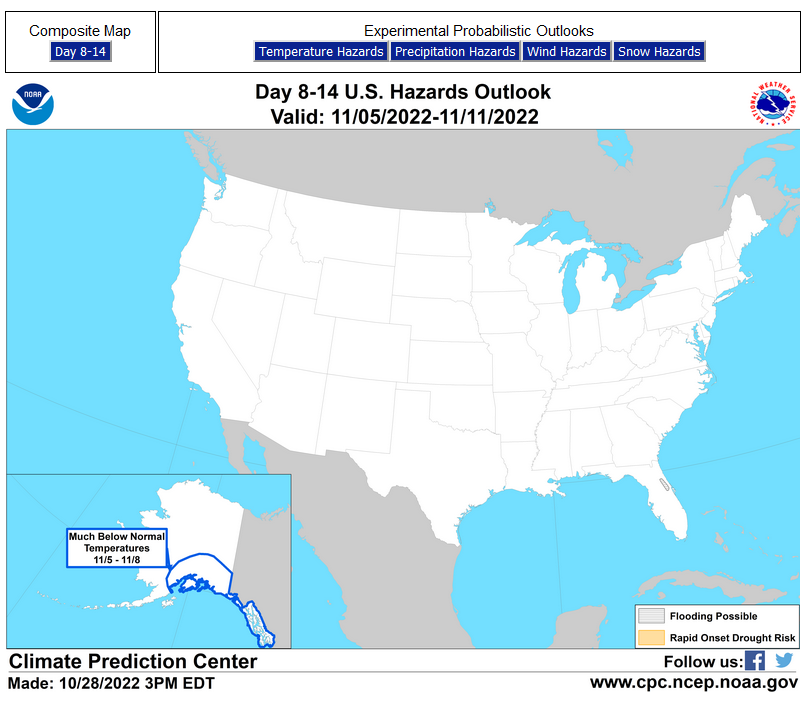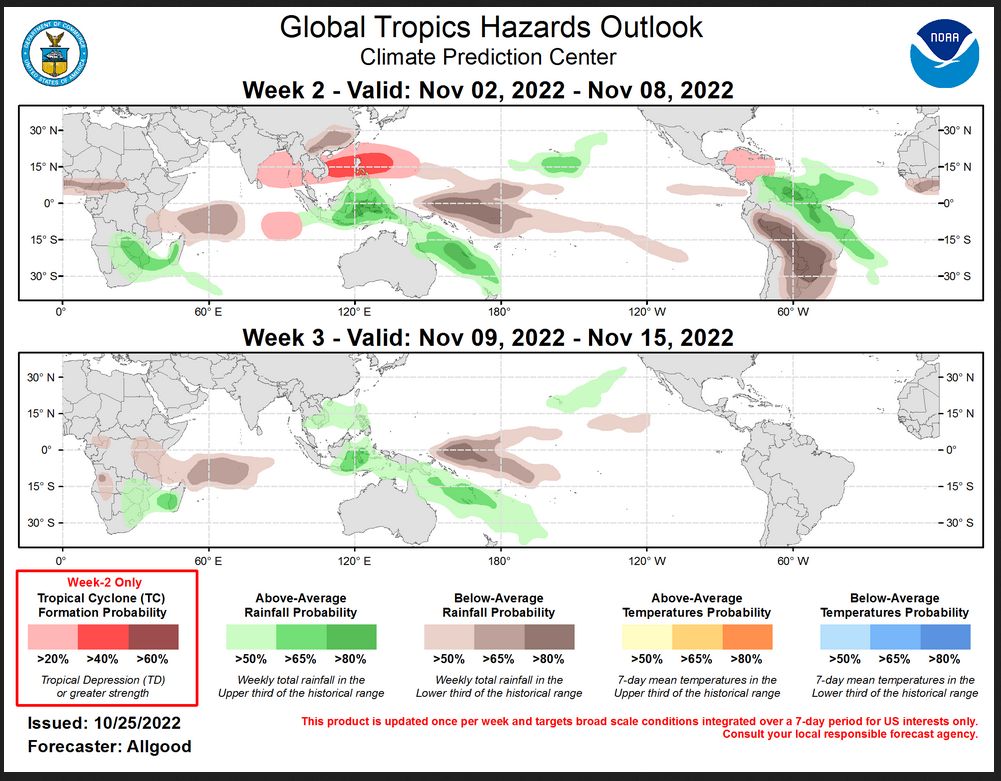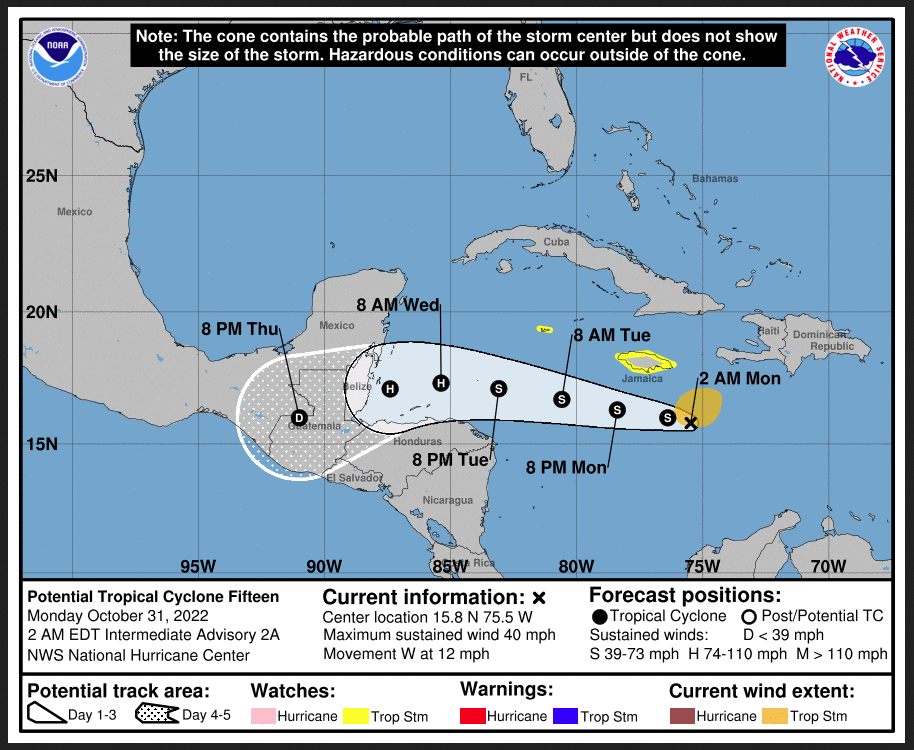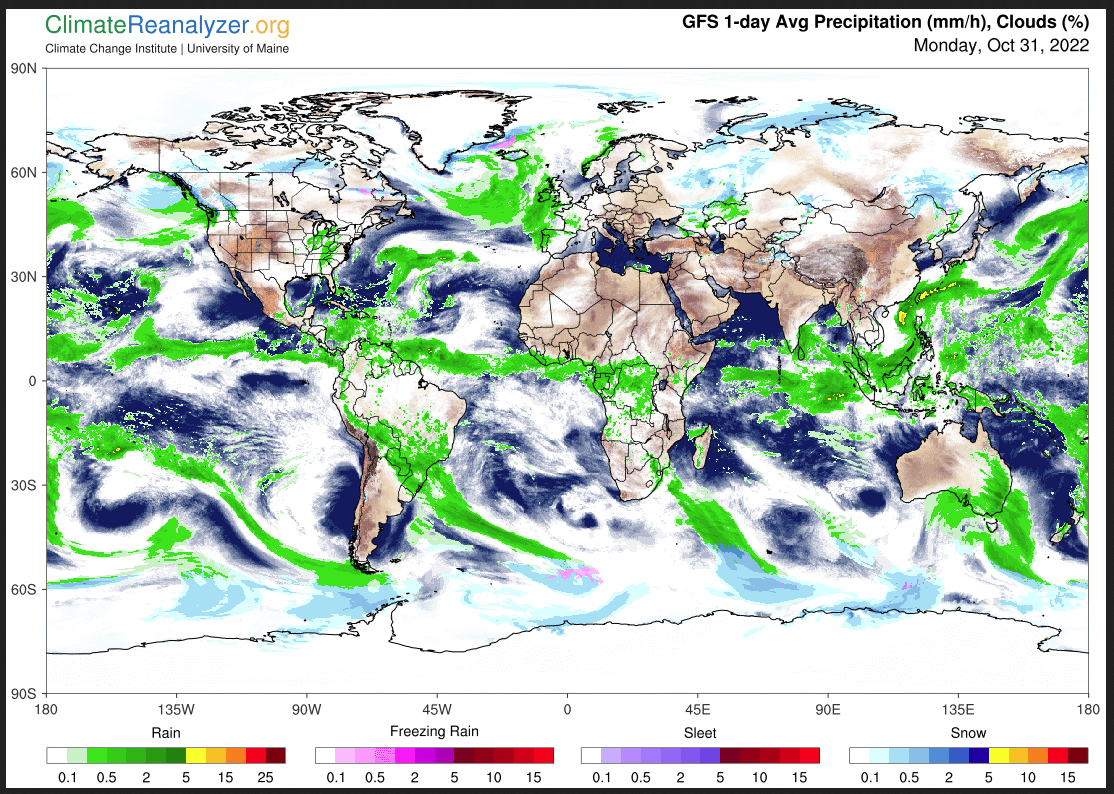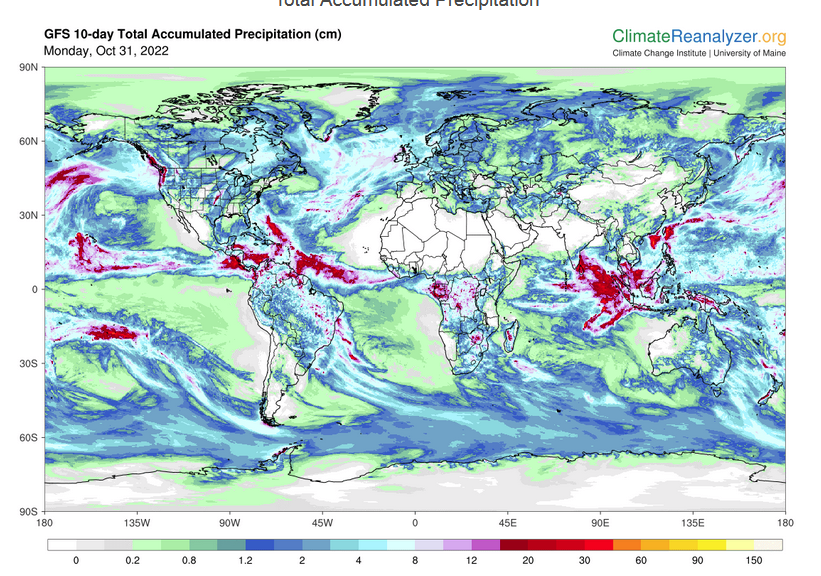Here is what we are paying attention to this evening and the next 48 hours from this evening’s NWS Forecast.
...Unsettled weather will spread across the Eastern U.S. through Tuesday... ...Widespread rain and high elevation snow expected across the Pacific Northwest and Northern/Central Rockies through mid-week... ...Cooler temperatures will arrive in the West by mid-week while the Central U.S. warms...
Continuation of the NWS Short Range Forecast (It is updated twice a day and these updates can be found here.
The low pressure system that brought severe weather to the central Gulf Coast yesterday is slowly moving northeast. The system is forecast to split into two weaker low pressure systems on Monday as it approaches the East Coast. Unsettled weather will gradually spread eastwards across the eastern U.S. as the system progresses, but severe weather is not anticipated. Trick-or-Treaters in the Ohio Valley, central and southern Appalachians, Mid-Atlantic, and portions of the Southeast may have to dodge showers and isolated thunderstorms. This system is expected to push offshore into the Atlantic on Tuesday and the eastern U.S. will become mostly dry by Wednesday. A separate low pressure system just south of the U.S. will also bring scattered showers and thunderstorms to South Texas and portions of west and central Texas Monday through Tuesday. Precipitation chances will diminish in Texas on Wednesday. Trick-or-Treaters in the Pacific Northwest will likely have a soggy Halloween on Monday as a cold front moves southeast across the region. Widespread rain at low elevations and mixed precipitation and snow at high elevation will develop behind the front, engulfing the region and spreading into the northern and central Rocky mountains by Tuesday. Rain and high elevation snow will remain in the forecast for these areas through mid-week with isolated heavy mountain snow possible at times. Precipitation will start to push into the central U.S. later this week when the front moves past the mountains. Colder air will filter in behind the front, and below normal temperatures are forecast to spread across most of the western U.S. by mid-week. High temperatures in the 40s and 50s will be common, and high elevations will be colder. While the west cools, southerly flow ahead of the system will bring warmer air into the central U.S. Temperatures will be above average through mid-week for most of the Central U.S. with highs in the 60s and 70s.
Current forecast of heavy precipitation (Updates can be found HERE)
Maps that relate the forecast to geography can be found by clicking Here for Day 1 and Here for Day 2.
Here is a 60-hour animated forecast map that shows how the short-term forecast is expected to play out
If it needs to be updated click here.
ATMOSPHERIC RIVERS
Click HERE to update. Here is some useful information about Atmospheric Rivers.
HAZARDS OUTLOOKS
Click here for the latest complete Day 3 -7 Hazards forecast which updates only on weekdays. Once a week probably Monday or Tuesday I will update the images. I provided the link for readers to get daily updates on weekdays. Use your own judgment to decide if you need to update these images.
Worldwide Tropical Forecast
(This graphic updates on Tuesdays) If it has not been updated, you can get the update by clicking here This is a new approach and covers weeks 2 and 3 not weeks 1 and 2. It has more information but I am having trouble getting used to it. As usual, it comes with a discussion which is below
Detailed Maps and Reports for the Western Atlantic and the Pacific Oceans
Below are four maps that summarize the situation for the Atlantic, Eastern, Central Pacific, and Western Pacific. Additional information can be accessed by clicking HERE
First the Atlantic
Click to view the forecast map and have access to additional information https://www.nhc .noaa.gov/gtwo.php?basin= atlc&fdays=5
Then Eastern Pacific
Click to view the forecast map and have access to additional information https://www.nhc.noaa.gov/gtwo.php?basin=epac&fdays=5
Then Central Pacific
Click to view the forecast map and have access to additional information https://www.nhc.noaa.gov/gtwo.php?basin=cpac&fdays=5
And the Western Pacific
Click to view the forecast map and have access to additional information https://www.metoc.navy.mil/jtwc/jtwc.html
Some Intermediate-Term Outlooks
Links to “Outlook” maps and discussions for three time periods. Days 6 – 10, Days 8 – 14, and Weeks 3 and 4. An outlook differs from a forecast based on how NOAA uses these terms in that an “outlook” presents information from deviation from normal and the likelihood of these deviations.
You have to click on the links because they do not update automatically and I do not want to have stale images in the article. But it is not difficult to click on a link and you get a large image plus a discussion. On Fridays in a separate article, we will show the images and provide a link in this article that article. But remember what you will see is the images as of Friday. But here you can get the current images simply by clicking on them. Then hit the return arrow at the upper left of your screen to return to the article. You will not find this information easily anywhere else.
Right now you can find these maps here (We show them every Friday there but you can click above and find them).
Worldwide Weather
Below is the current or short-term precipitation forecast which can be updated by clicking HERE Additional maps can be obtained HE RE.
Month to Date Information
Month to date Temperature can be found at https://hprcc.unl.edu/products/maps/acis/MonthTDeptUS.png
Month to date Precipitation can be found at https://hprcc.unl.edu/products/maps/acis/MonthPNormUS.png

